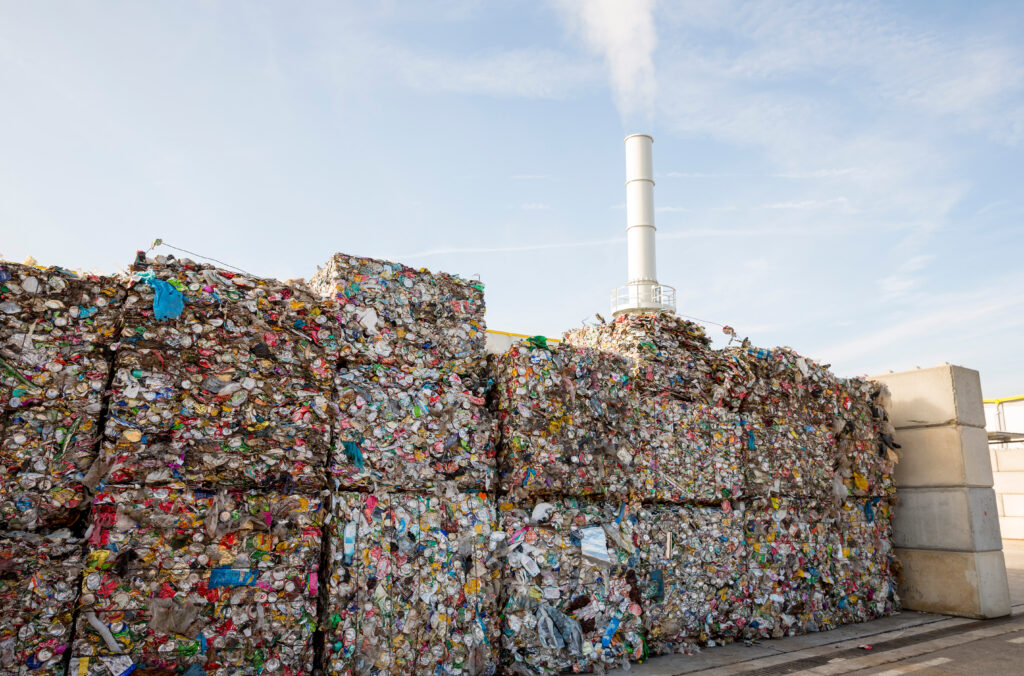Bexley will send up to 100,000 tonnes of waste to the energy-from-waste plant SELCHP – South East London Combined Heat and Power – over five years.
The borough said it is using the plant to protect itself from the forthcoming Landfill Allowances Trading Scheme (LATS) while it re-tenders a long-term waste disposal contract.
The government is introducing LATS from April 1, 2005, a scheme that will see English councils set limits on the amount of biodegradable material they can landfill each year. If councils landfill more than their allowances permit, councils will be fined 200 per tonne
(see letsrecycle.com story).
Bexley's preparations for the landfill allowances have been complicated because it has been forced to re-tender a long-term waste disposal contract that was due to start in December 2005.
The borough's waste and recycling manager, Stephen Didsbury, explained: “Currently we have a waste disposal contract with Cleanaway, and the company was preferred bidder for our long-term waste disposal contract. But, discussions collapsed, so we have decided to extend our current arrangements with Cleanaway from December 2005 to 2009.”
”We've never been against energy-from-waste, we just happen to be against Belvedere, and that's mainly to do with the scale of it. “
– Stephen Didsbury, Bexley council
Secure
The new disposal contract is likely to be re-tendered during the Autumn, Mr Didsbury said, but although the borough's recycling rate of about 22% is at the top of the London league, Bexley had to do more to be secure when the LATS begins next year.
Mr Didsbury told letsrecycle.com: “Because of LATS, Cleanaway and ourselves have talked to Greenwich, and we are going to send waste to SELCHP as part of Greenwich's contract. It should be 10,000 tonnes in the first year, 15,000 tonnes the year after, and rising each year by the same amount.”
SELCHP recovers about 420,000 tonnes of waste each year from the boroughs of Lewisham, Southwark and Greenwich.
Belvedere
Ironically, Bexley's decision to use some of the plant's spare capacity comes as the borough is opposing the construction of the Belevedere energy-from-waste plant within the borough's own boundaries (see letsrecycle.com story).
Mr Didsbury insisted: “We've never been against energy-from-waste, we have previously had a four-year contract that included it. We just happen to be against Belvedere, and that's mainly to do with the scale of it. A smaller plant would have been better.”
”We note Bexley council's affirmation, in this short-term decision, that incineration with energy recovery remains part of its strategy.“
– Cory Environmental
The Belvedere plant, which plant operators Riverside Resource Recovery are proposing to use to recover about 585,000 tonnes of waste each year, was subjected to a public inquiry last August. It is thought the planning inspector's report has gone to the Secretary of State for Trade and Industry and a decision is likely in the next six months.
Cory
Sources close to Bexley council said that another factor in its objection to the Belvedere plant is that it would be “burning everyone's waste but ours”. If it is given the go-ahead, the main customer for the plant would be Cory Environmental, which desperately needs Belvedere for its waste disposal contract with the Western Riverside Waste Authority.
Without the Belvedere plant, Cory's WRWA contract would be in jeopardy from 2007, when Cory's Mucking landfill site closes.
Commenting on Bexley's decision to use the SELCHP plant, a spokesperson for Cory Environmental said: “We note Bexley council's affirmation, in this short-term decision, that incineration with energy recovery remains part of its strategy for more sustainable waste management. Subject to a favourable decision on the Riverside project, we hope to be able to offer the council a locally-based solution to the challenge of meeting its landfill diversion obligations when it tenders a new long-term contract.”











Subscribe for free